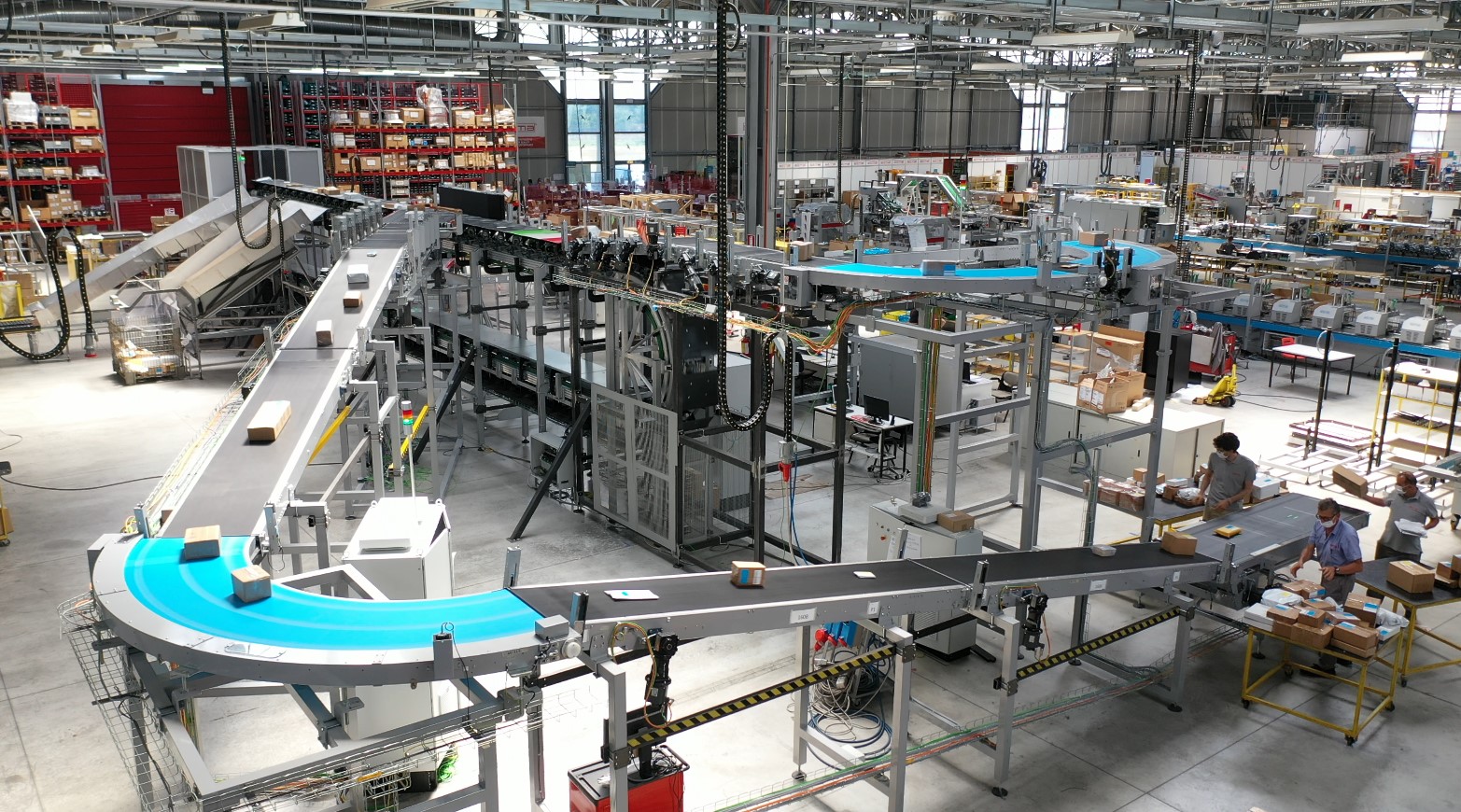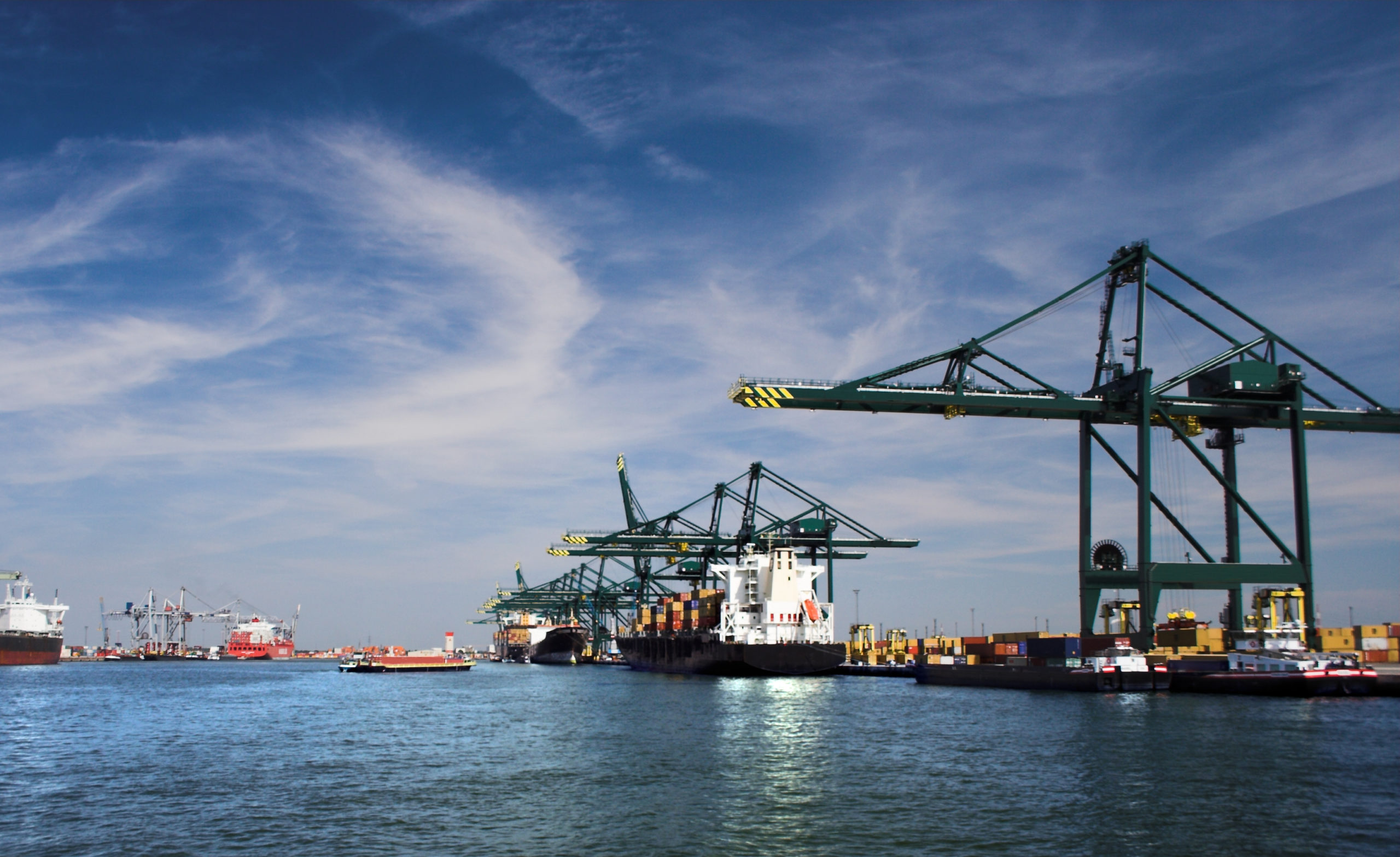Sitma Machinery is launching Symphony, a sorting system that takes up the baton of Easy Sort and Speedy Sort, its existing best-sellers in the logistics automation sector. Through Symphony, Sitma takes another step forward, creating a cutting-edge technology that remains easy to use and fully satisfies the new challenges facing the sector.
Symphony can be configured in both a “tilt tray” and “cross belt” mode. The first example of this technological evolution was created for an important operator in North America, where it is currently being installed, with testing forecasted by autumn of this year.
The growth of the logistics sector driven by e-commerce, is one of the most relevant phenomena in recent years. According to data provided by PR Newswire, the sector boasts a compound annual growth rate of 23% globally and will reach $16 trillion in value by 2027. This increase creates new needs, including the necessity to create increasingly complex and articulated layouts that can move objects even faster.
Sitma has put in place the know-how accumulated in over 40 years of activity in the logistics sector and working around the concept of modularity, has launched a system that is able to support particularly complex configurations. Symphony can in fact be set up with straight or curved modules, suitable for supporting upward or downward movements and preserving the packs from the risk of falling and damage — even at high speeds. All of this is achieved in incredible silence.
Single starting point
A single modular base structure allows the use of both a tilt tray and cross belt technology, depending on the specific needs. Symphony can also support multi-output and multi-directional configurations, helping to increase production capacity and line efficiency. The chutes for unloading products allow for maximum flexibility, giving customers the opportunity to manage different outlet configurations and container positions for collecting the products. Even for large dimensions, the outputs can be dynamically configured according to the changing production needs.
Speed is an increasingly determining factor for players in the logistics chain, whether they are postal operators, couriers or third-party providers. This was demonstrated by The Canada Post Corporation, which found this innovative technology to be the ideal solution for tackling logistics management. According to a survey carried out by PwC, receiving a product as quickly as possible is in fact at the top of the list of services requested by those who order through e-commerce platforms.
Having a fast and efficient sorting system is a fundamental requirement to meet this need. Symphony offers top performance in this sense, being able to manage up to 14,000 products per hour in the tilt-tray configuration and up to 20,000 with cross-belt configuration. The system also boasts an increased load capacity compared to previous solutions, being able to sort larger and heavier products. In the tilt-tray configuration it reaches up to 15kg per tray, while in the cross-belt configuration, it can manage up to 30kg.
These performances require a handling system that guarantees operational fluidity and maximum reliability. Symphony runs on polyurethane wheels, specifically designed to minimize noise (which is below 70dB) providing add-on value in the work environment. The system is also gearless and equipped with standardised transport cells, which are very light and highly technological. The brushless motors are installed on-board and each cell is powered by electricity; being interconnected via wi-fi with the PLC, to communicate its positioning in real time. These features are not only useful for purposes of planning sorting activity (for example to send and receive inputs from PLC for unloading) but also for the constant monitoring of the line. To be more precise, it’s possible to know where the products are at any given moment in time.
Little or no maintenance
Finally, Symphony minimises maintenance activities by using a high number of identical parts, thanks to this new development that has been extremely simplified. Sitma has also turned its design efforts towards arriving at a solution that is completely maintenance-free – a goal that can be achieved by equipping the sorter as an alternative to mechanical traction systems, with electromagnetic traction solutions. In this case, linear motors and magnets are used, which are installed directly on the cells. In addition to the total elimination of maintenance activities, this also entails a further reduction in noise.






